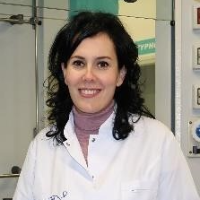2nd World Congress on
Pharmaceutical Chemistry and Drug Development
October 09-10, 2025 | Online
WCPD 2025

Catholic University Our Lady of Good Counsel, Albania
Abstract:
Aging is a continuous, cumulative, and natural process that results in irreversible alterations in all molecules, cells, tissues, and organs of a living being. The senescence of the brain is linked to an elevated susceptibility of developing various neurological conditions, such as Alzheimer’s disease, Parkinson’s disease, and stroke. As a result, finding effective methods to mitigate or postpone brain aging is crucial for enhancing the quality of life and health span of the senior population. Prior research has shown that Dgalactose is a suitable agent for inducing aging effects in both in vivo and in vitro models. Human SHSY5Y cells are a well-employed cellular model for studying the mechanistic aspects of neural development and neurodegeneration. Saffron (Crocus sativus L.) is a spice derived from the flower of a perennial plant that belongs to the Iridaceae family. Several clinical and preclinical studies have demonstrated that saffron and its constituents can improve cognitive function, mood, sleep quality, and other neurological outcomes in patients with mild cognitive impairment and Alzheimer’s disease. Moreover, saffron and its constituents have been reported to exert neuroprotective effects through various mechanisms, such as modulating neurotransmitters, reducing neuroinflammation and regulating oxidative stress. Based on reported evidence, in this study, we examined the anti-aging effects of local Saffron extract (SE) on a D-GAL-induced aging model using human SH-SY5Y. The first part of the study was focused on the preparation of saffron hydroalcoholic extract and characterization, then we focused on the analysis of cell proliferation, live-cell cytotoxicity, Beta-Galactosidase (β-GAL), lipid peroxidation (MDA), intracellular reactive oxygen species (ROS), superoxide dismutase and catalase, and advanced glycation end products (AGEs) levels. In conclusion, our research underscores the therapeutic potential of SE in brain aging counteracting oxidative stress imbalance.
Biography:
Erjola Bej studied Pharmacy in the University of Milan, Italy and at the moment she is a PhD student at the University of L’Aquila, Italy, Department of Life, Health and Environmental Sciences. In the meantime, Erjola is a Professor in the Faculty of Medicine, Nursing and Physiotherapy study programmes, Catholic University ‘Our Lady of Good Counsel’ Albania, and a member of the Department of ChemicalToxicological and Pharmacological Evaluation of Drugs of the same university.
